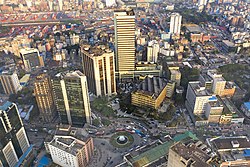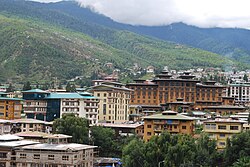 | |
| Statistics | |
|---|---|
| Population | 2 billion [1] [2] |
| GDP | |
GDP growth | 5.9% (2024 est.) [5] |
GDP per capita |
|
| 7.2% (2022) [3] | |
| Unemployment | 7% (2022) [3] |
| Public finances | |
| 78.8% of GDP (2023 est.) [3] | |
| Most numbers are from the International Monetary Fund. IMF South Asia Datasets All values, unless otherwise stated, are in US dollars. | |

The economy of South Asia comprises 2 billion people (25% of the world population) living in eight countries (though Afghanistan is sometimes excluded). [6] [7] The Indian subcontinent was historically one of the richest regions in the world, comprising 25% of world GDP as recently as 1700, [8] [9] but experienced significant de-industrialisation and a doubling of extreme poverty during the colonial era of the late 18th to mid-20th century. [10] In the post-colonial era, South Asia has grown significantly, with India advancing because of economic liberalisation from the 1980s onwards, [11] and extreme poverty now below 15% in the region. [12] South Asia has been the fastest-growing region of the world since 2014. [13]
Contents
- History
- Ancient and medieval era
- Colonial era
- Contemporary era
- Post-colonial era
- Recent decades
- National economies
- Tables
- Poverty
- India
- Bangladesh
- Pakistan
- Afghanistan
- Bhutan
- Maldives
- Nepal
- Sri Lanka
- International Economic Reports on South Asia
- See also
- Notes
- References
- Sources
Despite projected growth rates of about 6.0-6.1 percent for 2024-2025, South Asia continues to face significant economic challenges. A notable slowdown in private investment, especially in key sectors such as manufacturing and services, poses a major concern. Additionally, persistent employment issues, particularly low female workforce participation, highlight broader socio-economic disparities. The region is also critically vulnerable to climate-related impacts, including flooding and heatwaves, which significantly affect the agricultural sector—a fundamental component of local economies. This environmental susceptibility strains the already limited capacity of the public sector to adapt, increasing dependence on resilience initiatives from local businesses, farmers, and vulnerable communities. [14] : xv





